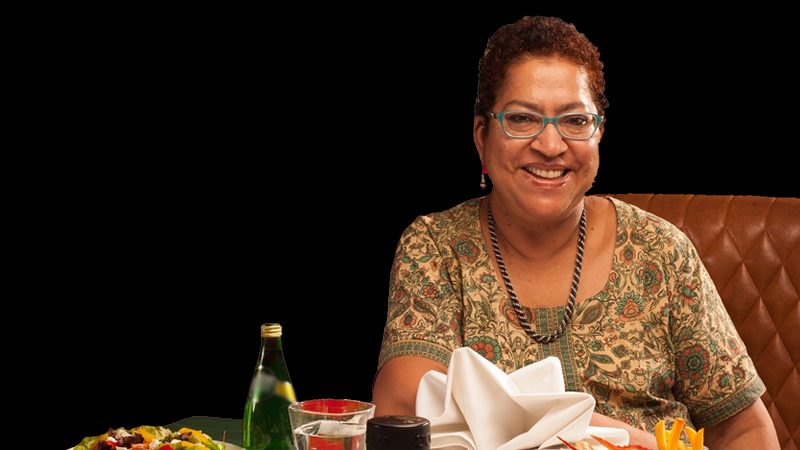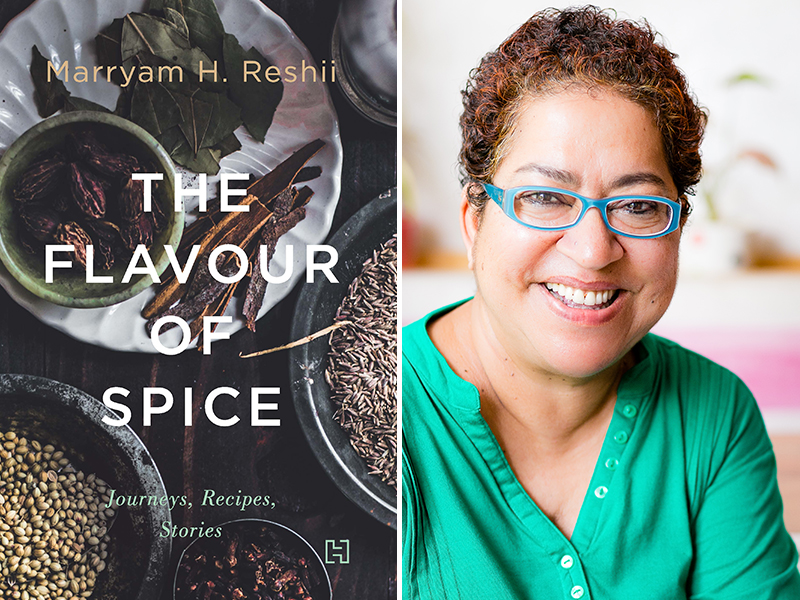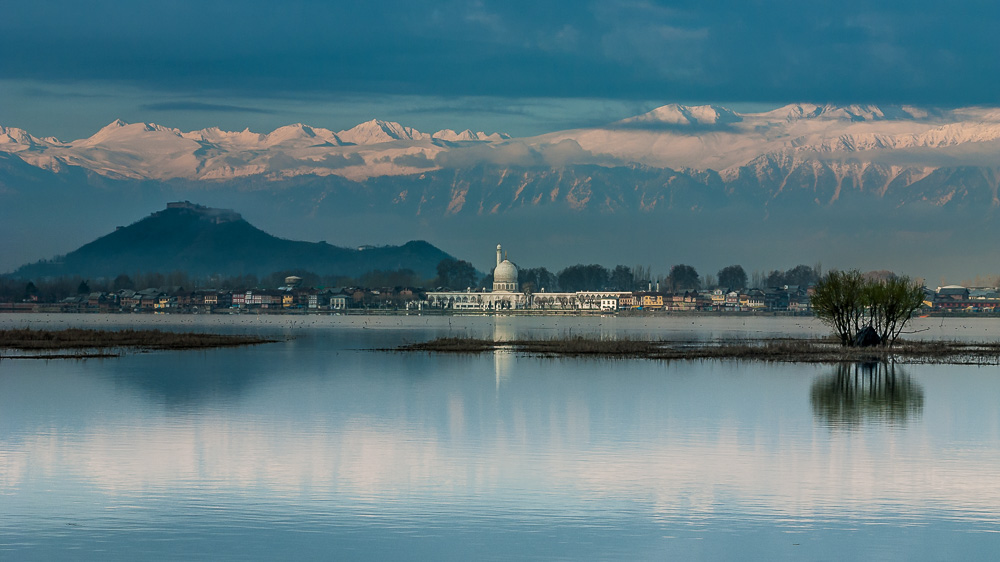
Spirited. Engaging. Candid. Humble. That’s Marryam H. Reshii for you. One of the brightest shining stalwarts of India’s F&B map, the legendary food critic and author has been instrumental in moulding the country’s perception of not only food writing, but food itself. Penning her observations on the culinary landscape for over 30 years now, Reshii has graced multiple national and international publications, helmed the Time’s Food Guide for 10 years running, and authored several books. As she continues to cast a spell with her exacting perception of the trade and its apt literary presentation, #DSSCSecretConversations unravels this traveller at heart and ardent collector of spice grinders.
The seed for writing on food was planted early on in Marryam’s life. As a student grappling with the ‘quite grotesque’ boarding school food, she’d ask her friends what they ate during holidays, and recorded the recipes in a meticulously maintained diary. “I would recreate the flavours of those dishes in my mind to be away from the ghastly watery, lumpy dal and barely cooked rice at school,” she quips. While this habit was cultivated in order to ‘get my concentration elsewhere from that food’, it set the wheels of fate in motion. However, before donning the hat of a food critic, Reshii wrote on her other passion in life – travel. Although the going was good, family life made her decide to halt those travelling boots, “After my children were born, it was not practical to have a small suitcase packed in the corner of my room, waiting to fly off to the latest port of call. I looked for an alternative, and discovered food writing.” Panning the lens back three decades, we ask what motivated the atypical choice of chronicling the culinary landscape. “Food writing was horrifyingly unconventional, but sometimes gut instinct leads you to very felicitous places. That’s what happened in my case.” Felicitous indeed; the lady went on to become the formidable force to reckon with, that she is today, in the food industry.

Left Image: hachetterindia.com; Right Image: Madhu Menon, bigshotphoto.in
Fast forward to inking food stories as a profession, Reshii has authored books spanning a host of subjects, from her favourite restaurants across India, to top chefs in the country, to scotch; and her latest, The Flavour of Spice, which came out last year. With her books being swept off shelves quicker than you down your morning espresso, we ask her about the process of consistently churning out bestsellers, “First I begin thinking of it like a haze and go about it randomly – this one time I started speaking with someone from the Chettinad community simply because I happened to be sitting across them at a table. It starts off as a fog of the elements in my head. Over time, and with research, the fog subsides and gives way to crisper theses, that’s when I begin writing.” As she continues to spin her magic with the written word, an unmissable theme runs through her works – Kashmir. With two books and a chapter about the Valley, we ask her how she, as a Goan, took to Kashmiri culture like fish to water. Whilst Reshii’s parents steered clear of a communal atmosphere and believed in an inclusive upbringing, Kashmir created a home in this Goan’s heart during her first assignment in the region – putting together a series of tourist pamphlets. Seeking to write about the then-unknown aspects of the Valley, the fresh-faced Marryam was looking for walking shoes to begin her journey, and landed at a shoe shop that quite literally helped her do so. “When I visited I was asked to come at 5 p.m., as the owner would be present then. So I went back in the evening, and formed a bond with the owner that persists until today!”. As the owner spoke to her about houseboat owners owning pieces of water and making land out of their water territories, he presented Reshii with a starting point for her research on Kashmir.

With over a quarter century of observations about the F&B milieu, Marryam shares her take on the change in the patrons over the years, “Initially, only the men used to drink. Back in the day, a 28-year-old son would go out with his father, the father would order a drink and the son would say ‘I don’t drink, Dad’. Today, the father wouldn’t even dream of taking his son out in this fashion, and the son would be embarrassed if he were asked.” She goes on to remark that while cocktails have been a popular choice, people are now taking to straight drinks and wines. “While most people drinking and serving wines don’t know what is a good wine and what isn’t, the point is that someone who would’ve never offered a woman wine is now offering a lady wine. Someone who would’ve never offered a woman alcoholic beverage is now offering a lady an alcoholic beverage,” Reshii says. She adds that the next stage would be where the servers and the consumers know their wines, “He’ll say ‘I’ve got Pinotage’ – everyone knows it comes from South Africa, so he wouldn’t have to mention he’s got an African wine.” She asserts that “We (food industry) have to be in constant turmoil, constantly striving to improve,” and opines on how the dining habits of consumers have evolved. “Previously, three generations would dine together, and the choice of cuisine and restaurant would be dictated by the head of the family. Now, the family group has become splintered, and mostly people go out only with their own age group.”

Hazratbal shrine, Dal lake, Srinagar by Matt Brandon – who contributed images to ‘Kashmir – The Mystery’, the book he co-worked on with Marryam Reshii, Image: thedigitaltrekker.com
Speaking of evolution within the industry, we discuss the rise of the new age celebrity chef, “It makes me sad to see so many chefs on social media. Whatever time you spend online, you could spend on staff briefings and make your service staff a little more proactive. Don’t waste your time on social media, it’s not going to pay you, I promise you,” Reshii comments. Narrating a recent incident, where her friend met with a chef who introduced himself as a ‘Celebrity Chef’, Reshii candidly reckons, “But who is a celebrity chef? Are you sure you are one? Because if not, then you come across as a bit of a loser.” She further ventures about how this phenomenon impacts the process, “A lot of chefs, when they become popular, start preparing food they think you want to eat, and they want to force it down your gullet. The chemicals used for plating techniques, salmon pumped with all sorts of unhealthy ingredients imported from Norway, simply because you don’t want the Gujarati pomfret of Bengali hilsa, etc. – are you sure it’s not impacting my health? I don’t like my food being divorced from my nutrition. Even if I’m eating out, I want health and nutrition to be equally considered.” While she takes on this trend for chefs, Reshii concludes that, “We have a very long way to go with our meat industry. The taste of the meat should reflect the same quality as other countries,” about the industry comprehensively.
With a finger always tracking the pulse of the industry, we speak about the past, present, and future trends that the F&B sector is witnessing. Channeling the prevalent sentiment about molecular gastronomy making inroads into Indian kitchens, Reshii says, “That was horrendous. We looked outside our window, saw what the world was doing, and started doing the same thing. That’s not the way to catch a trend.” Marching towards the more current phase of introducing regional cuisine in restaurants, she is appreciative of the movement. “As a friend said, we’re not a country, we’re a continent with 29 countries – so many regional variations within each state that they’re countries in themselves. So I hope this trend will stay for quite a while. Even if it persists for 10 years, I don’t think we will be able to exhaust the recipes of a single cuisine.” Reshii applauds the efforts of the likes of Michel Koopman (General Manager, The Leela Ambience Gurgaon), and Chef Tejas Sovani (Amaranta, The Oberoi Gurgaon). Koopman has brought in chefs from across India to whip up authentic food from their respective regions, Sovani has conducted intensive research to bring authentic flavours from the country’s various corners. His Pallipalayam masala is the same as one would find in the eponymous district of Tamil Nadu. Moving onto what awaits us, Marryam anticipates the rise of the home chefs, “Those who do really good regional food will be coming out and they’ll be the queens of the scene.” She goes on to share, “You keep hearing that real Indian food can only be found in homes, not restaurants. So those amazing home cooks who weren’t allowed to have a career and consequently put all their energy in cooking great food for their families are now having their moment.” Telling us that a few are already collaborating with hotel festivals, Reshii affirms that this trend is set to roll out.

With an expansive spell in the industry and an ocean of knowledge under her belt, we converse about the nature of her journey, “Very unexpected!” comes the reply. “When people come up to me to say that they read my column regularly, that I’m famous, and they’ve seen my body of work, I ask myself ‘what body of work?!’ I just believe I’m a small mouse milling about and doing my work,” says the endearingly-humble Reshii. With no inclination to set aside her ink pot just yet, she shares what’s next on her platter “I would love to work on a book on Kashmir and Kashmiri food since not very much is known about these. So, at some point I would love to do that.”
Amen to that. As we look forward to this luminary’s next outing, we clink our teacups, and set up the signature DSSC Rapid Fire as we bid adieu.
Last day on earth – which restaurant will you visit?
Attica by Ben Shewry.
The best perk of the job?
Travelling and eating at all the best places!
And the worst pitfall?
You get busy with eating and then have to rush to write about it. In the process, one doesn’t get a moment to look after themselves.
Your go-to dining place in Delhi?
The Big Chill – the staff rotates too much to know who you are and it’s a breather from the typical bowing and scraping at restaurants! It also is one of the few restaurants that still draws a broad cross-section of guests, and not restricted to a particular age group.
Your favourite spice grinder?
The limestone Kashmiri one, that’s the only one I use. The others are merely decorative; I’ve got a wooden one from Finland, a porcelain one from Bali, a terracotta one from Bangkok, and there’s one that looks like a belan from the Chettinad region.
One piece of advice for aspiring food critics?
You don’t know anything – start out with that premise. After 30 years, I can say with extreme genuineness that I really don’t know anything.
Your most memorable travel-culinary experience till date?
Travelling to Kutch in the late 80s. There was no electricity, no running water, no roads in the village I visited; they ate a vegetable made out of the green part of spring onions with huge rotis laden with white butter. The meal was accompanied by tea served in tiny cups, overflowing onto the saucer, so first you had to sip it from the saucer noisily, and then sip it form the cup. That place was so poor, yet so hospitable!
Another would be from 2016, when I was invited for a Noma pop-up in Australia. I loved the pop-up. Then, a few days later, I visited Attica by Chef Ben Shewry in Melbourne and was absolutely blown away by the food. We tried the degustation menu, and from kangaroo meat to potatoes, the chef took us on a journey and literally told us a story!
What does DSSC mean to you?
Fabulous writing – extremely good quality of writing. Otherwise, I wouldn’t be doing this (the interview)!
This conversation is a part of the DSSC Secret Conversation Series, where we get candid with the ace industry disruptors who map its course one masterstroke at a time.
Featured image courtesy: memsahibindia.com

